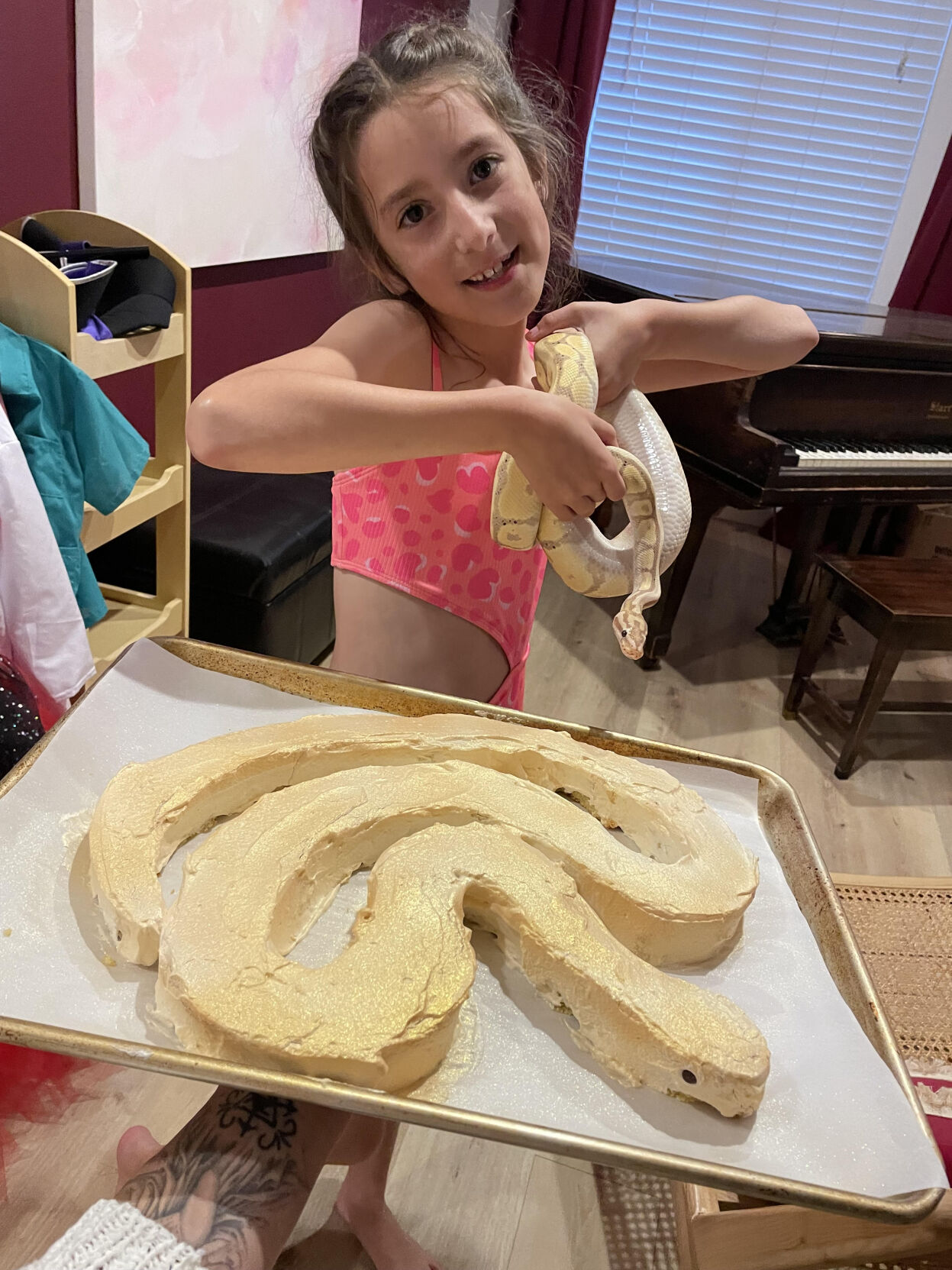Most people have a love of dogs or cats, and even pocket pets like guinea pigs make their way into the hearts of many people. However, perhaps the most misjudged and misunderstood pet on the planet is a snake.
Though snakes do not make good pets for everyone, for some people they make perfect companions. This story is about one special little snake, her injury, medical treatment, and continuing recovery.
In April, a very worried snake owner arrived with a snake whose jaw was visibly out of alignment. The young man explained that he attempted to feed his juvenile ball python a young mouse, and the snake was unable to swallow it, therefore injuring her jaw.
Neither Dr. Collins nor I had ever seen a snake with an injury such as this, so we began researching VIN (Veterinary Information Network), a website where veterinarians from all over the world network about unusual cases. I located a similar case where a snake had broken and dislocated its jaw. In this case, the veterinarian put the snake under general anesthesia, re-aligned its jaw, taped it in place for a few weeks, so the bones could heal. Following this treatment, the snake made a full recovery.
Given this was the only case I could locate similar to the snake in my office, I recommended we proceed with the same plan. When the worried owner asked, “What is the likelihood this will work,” I advised him that I have no idea because I’ve never seen such a case. I explained that his other options would be to go to UC Davis or an exotic surgical specialist for orthopedic surgery on the broken jaw, or to euthanize the young snake. Later that evening, I went into emergency surgery with the beautiful little snake. I realigned the jaw and placed it into its normal position. I then taped the jaw closed for a few weeks in hopes the bones would heal successfully.
Today, this beautiful little snake continues her recovery journey. She is having periodic checkups and is being assisted with feedings, so she does not reinjure her healing jaw. Currently, she is on track for a full recovery. This little snake is one tough noodle!
If you think a ball python might make a good pet for you, there is some basic information you should know.
Ball pythons are native to Africa, living in grasslands and wooded areas. Their scientific name is python regius. Commonly they are known as ball pythons or royal pythons. The name ball python is because the snake rolls into a ball when threatened to protect its head, while the name of royal pythons is believed to have originated from the fact that Cleopatra and other royalty wore the snakes as jewelry.
The average life span is 20 years though some have lived up to 30 in captivity. They grow 2-6 feet in length, with the females being larger. They are one of the most popular snakes to keep as pets due to their docile personality. They are calm and slow moving and typically do not mind being held. From a ball pythons’ perspective, their human is basically a heated tree and they will “hang out” with their owners. It is this friendly demeanor that makes them great companions.
Baby ball pythons need a 10-gallon, snake-proof terrarium, while an adult will need a minimum of a 40 gallon. They require a warm side and cool side of their tank, so a under tank heater and basking light should be on one side keeping temperatures at 88-92 degrees Fahrenheit, while the cooler side should be 76-80 degrees. A heat rock or ceramic heater is not recommended since they can burn the snake.
Humidity needs to be between 50-60% and needs to be increased during shedding. This can be accomplished by spraying the tank daily or by installing a mister on a timer. Reptibark (bark for reptiles found at pet stores or online) aids in keeping up the humidity as do real plants such as philodendrons.
Ball pythons are non-venomous constrictors, so they restrain and suffocate live prey. In captivity frozen rodents are preferred for the safety of your pet — to avoid live prey biting the snake and causing injury. Though some say you can feed food as large as the widest part of the snake’s body, I disagree. This was the guideline that caused the injury. I recommend feeding prey a little larger than the diameter of the snakes neck. This is to avoid a rodent becoming stuck and needing to be removed or a break like what happened in this case. Ball pythons often go on hunger strikes and refuse food, but if this persists beyond three months go see the veterinarian because your ball python may be ill.
Ball pythons are relatively easy pets to keep, and they are usually hardy. However, with improper husbandry such as temperatures, humidity, or unclean bedding, they can be subject to respiratory infections, mites, or mouth rot. It is important to monitor your snake’s behavior, weight, and shedding to watch for signs of health issues.
I hope I have inspired you to look beyond the undeserved reputation of a snake. Ball pythons may not purr or wag their tails, but they are an endearing pet. These gentle creatures can make fascinating companions. Next time you are in the clinic, ask to hold Kaa, our clinic ball python. If you are fearful of snakes, you can start by touching her tail, who knows, she may just slither her way into your heart.












